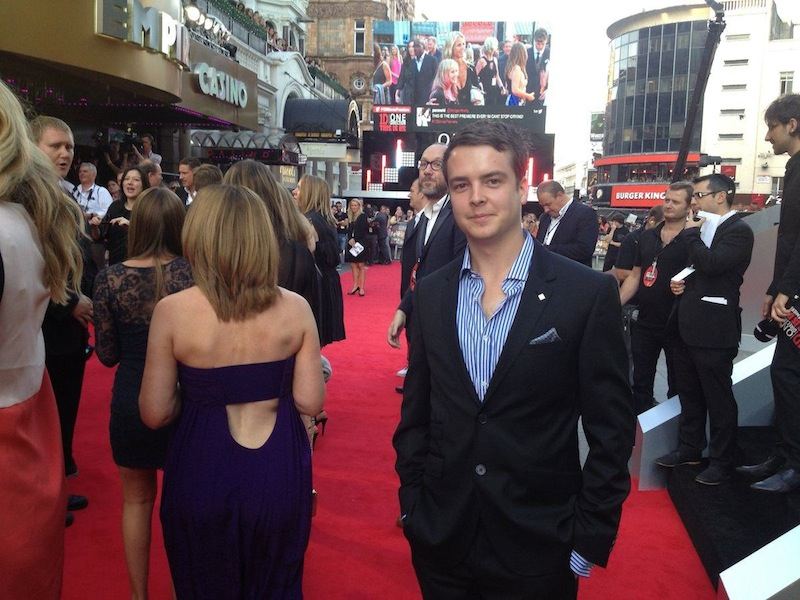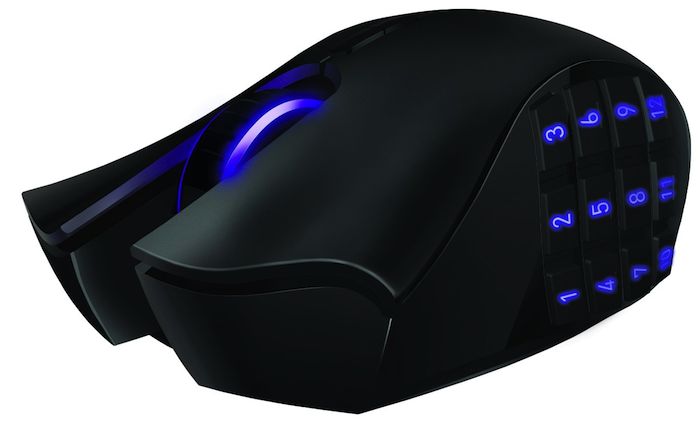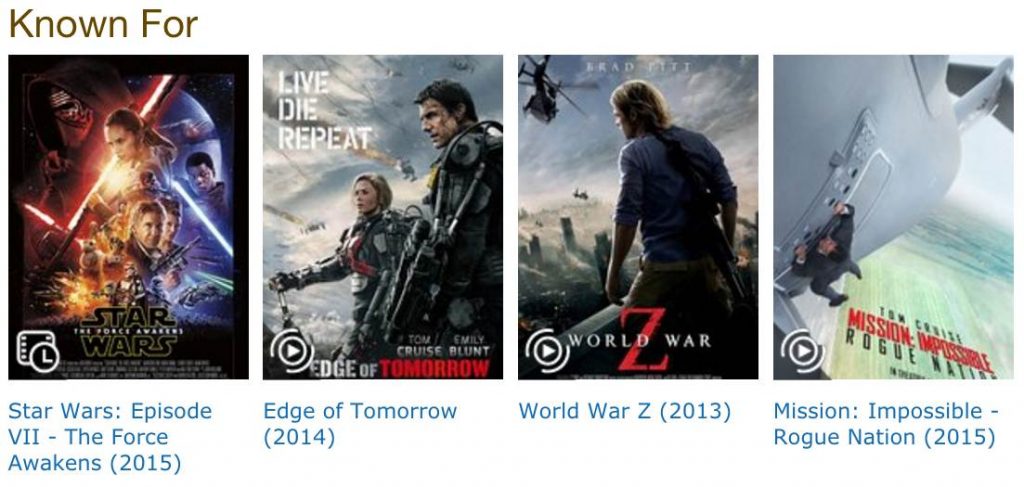What does a Second Assistant Editor Do?
The role of a second assistant film editor isn’t often the focus of many interviews, as the limelight often falls primarily on the Editor or even First Assistant Editor. But in reality the role is the one that many people trying to break into the industry will first find themselves in. But how can you learn what the role really involves if you don’t get to hear much about it?
In this interview with Second Assistant Film Editor Rob Sealey, you can hear what it’s like to work on the biggest film’s in a generation – i.e. Star Wars: The Force Awakens, as well as tent-pole Hollywood franchises like Mission Impossible: Rogue Nation and the nitty gritty technical and creative details of what a Second Assistant Film editor does every day.
I interviewed Rob a couple of years ago, on how he got his start in the industry in this previous post “How To Become an Assistant Film Editor“, which is actually one of my all time favourite posts on the blog. Mostly because it contains a real gem of wisdom that I’d not heard anyone articulate before, but I think is really important that a lot more people hear and take on board…
Don’t be intimidated by the film industry.
If you check out that previous interview you can discover his strategy that took him from knowing no-one in the industry to landing his first gig on World War Z within a month!
Interview with 2nd Assistant Film Editor Rob Sealey
On Star Wars: The Force Awakens
What did it feel like to hear you would be working on the biggest film in the world and how did that come about? (Were you even able to tell people?)
It was great news when I heard I would be working on Episode VII. A dream come true. It was a level completed in my life goals. To be working on a franchise that played such a big part of my childhood and inspiration to start making films myself.
I remember getting the call asking if I wanted to do it and afterwords how excited I was. I had been anticipating it happening though as I met up with producers a whole year before, so it had been an ongoing thing!!
I only really told my initial family at first. It was only once I was in full swing and it was public on IMDB that I could tell other people. As soon as you say you are working on a film like that, it opens you up to a whole can of worms and a load of new questions (most of which I couldn’t talk about).
How long were you on the film for and for what portions of the production/edit?
I was a part of the shoot. The film shot over here and then went back to LA for post. To be a part of the shoot still required me knowing the whole story and seeing all of the footage.
What was your day-to-day experience of working on the film like? Were there specific ramifications of working on ‘Star Wars’ vs a ‘normal’ film?
It was very much like working on any other film mostly as far as day to day tasks go. There was a really good vibe throughout the crew. Everyone knew this was such a big deal and that the anticipation was huge but I think that just made everyone more determined to do the best job they possibly could.
I made a conscious effort to visit the set almost every day. I was wowed every time. It was like walking into a whole different universe. There would be extras everywhere, BB-8 rolling around, C3PO, Chewie and Han Solo standing on set. It was really exciting to see these characters in real life stood just a few feet away.
I think the most obvious differences was the level of security on SW. Most films I have worked on have had pretty high security but this was next level. Also I wasn’t able to talk about anything related to the film to ANYONE else at all, other than my colleagues I was working with because all the material was so sensitive and any minor detail was a big news story. The hype that surrounded it, justified this security. Also in light of the Sony Hacking, this made it even more appropriate to have that level of security.
What was the dailies/first rough cut like on such a VFX heavy film?
The cuts are definitely watchable at that early stage. Huge amounts of pre-vis is done before the film even starts shooting which is generally what is put into those VFX heavy sequences to make it flow. There is usually someone creating shots at the request of the editors.
Sometimes just a title card explaining what would go in place of it is what is put into the cut to cover holes. I guess when watching them you have to use your imagination a bit and feel what will be there. So long as what is there helps tell the story (inevitably the most important thing) then it will be all good.
On Mission Impossible: Rogue Nation
What was it like working on another huge franchise? How much of the project was cut in the UK vs US? (Did you just do bits here or travel?)
It was great to be a part of another huge franchise with so much stigma surrounding it but still ran similarly to any other film. I must admit the Mission Impossible theme song does have very different memories for me now, as I have heard it so many times.
The entire project was actually cut in the UK. So there was no travelling at all for myself and I got to help see the project through from the very beginning right up to the end.
What was it like working under Editor Eddie Hamilton?
Working with Eddie was a great experience. He is a very technical editor who has an absolutely incredible knowledge of the Avid. He is like an Avid Encyclopedia.
He is a great storyteller and I certainly learnt a vast amount from working with him, from particular ways he cuts action sequences to the way he likes his footage organised and techniques he used to build up tension.
He would always take on board his assistants opinions and was very keen for us to cut scenes ourselves for him to look at. He also introduced me to a mouse called Razer Naga, which has 12 buttons on the side allowing you to program particular functions to them making some jobs MUCH easier and faster.
Buy on Amazon.com | Buy on Amazon.co.uk
Ed. Note – You can check out Mission Impossible: Rogue Nation editor, Eddie Hamilton’s Razer Naga settings in this post over on Premiumbeat.com. Another fan of the Razer Naga is VFX Editor Ben Mills who I interviewed in this previous post, on his role in the post production team.
2016 UPDATE – Download Razer Naga Profiles – As part of this detailed gear review post you can now download Eddie, Ben and Rob’s exact Razer Naga shortcut profiles.
Are there tips and techniques that you’ve picked up along the way that other second assistants would benefit from?
Always double check EVERYTHING you do. And be sure that everything that you send out of the cutting room to other departments is perfect as you are representing the entire department. Speed is not everything, but getting it precise is.
I would always advise people to take a break from their computer screens and take a 10/15 minute walk around the block once or twice throughout the day. We work such intense hours that you should always allow yourself a decent time away from the glare of your screen. I like doing this as it’s a great way to freshen my mind enabling me to be more efficient and proactive when I return.
Try to forward think so that you are doing what you can to help the 1st assistant and editor before they even ask you.
Industry Insights
How have you moved from film to film on your credit list?
I would say word of mouth and recommendations is what has got me moving from film to film. Sometimes I have worked with the same first assistants and second assistants who I worked with previously. Other times I have been recommended people who have then got in contact with me.
With working so much on such big films, have you had time to edit anything of your own?
It can be quite hard to work on projects on the side and edit. I think if I did it too much I would never see my girlfriend (but luckily she understands the situation). I do cut projects on the side when something comes up that I feel is worth investing my time into.
I recently cut a short film called “Billy Boys” that was chosen for “Staff Picks” on Vimeo and I am currently in pre production of another film with the same director.
What have you learned along the way from the first assistants and other post crew you’ve worked with, that you think is invaluable going forward?
From first and second assistants I have worked with, I have leant everything that I know. Oh and Lynda.com, she taught me the basics of Avid!
Seeing editors at work and doing their thing is probably something that is the most invaluable. Seeing cuts change over time and the decisions that are made.
The way editors juggle the politics that surround every movie, the opinions of producers along with the directors and their own agenda. This is something that people generally don’t get to see and I feel very privileged to be able to be a part of the whole process on such big films.
Which of your interactions with some of the world’s top filmmakers stayed with you and why?
I have always treated them the same as I would treat anyone else and just been myself. It has been great to be able to interact with such talented filmmaker’s some of whom I had idolized.
I think a memorable moment was when I walked into a dark screening room and sat at the back. The piece finished and then Tom Cruise started speaking. His voice was so recognizable and iconic to me. I had watched so many films he had been him, even worked on Edge of Tomorrow and not met him. The rest was history, as he spent a huge amount of time in the cutting room so we got to see a lot of Tom.
I built a very good relationship with Morgan Spurlock. He was a great guy to work with and just generally a top bloke. We also did a lot of socializing which will always stick in my mind.
How do you recoup after a major film? And what’s next?
I went from Star Wars to MI5 to Rogue One so I generally try and go on a holiday after a job. Somewhere hot and sunny where I can relax. As for the future, there are a few irons in the fire, nothing confirmed yet so that is all I can say!
The Role of a Second Assistant Film Editor
Talk us through each stage of production, what are the second assistant’s responsibilities and common daily tasks during…
Pre-Production
Usually there are not many assistants (if any) hired for pre production. I personally have never been involved in pre-vis but there is quite often a pre-vis editor on board who will have usually been on the film for a little while.
From a 2nd Assistant point of view I have always started around a week or two before the shoot, along with a 1st assistant, to start to help get the cutting room on its feet and create a dailies workflow and test footage so when it comes to doing proper dailies everything runs relatively smoothly and we can turnaround the footage quickly.
There are always usually little issues you come across with hardware and software that you need to overcome at the beginning of the shoot / pre-shoot, especially if you are working on the latest version of Avid and with brand new systems.
Production/Dailies
As soon as production begins, editorial begins with dailies. It’s quite funny because a lot of young people entering the industry assume editorial don’t start until after the shoot but in fact we are there from day 1 of the shoot and usually a bit before to prep! Dailies can go on for between 3 and 6 months usually depending on the film and every film is different.
It is quite often a very structured day especially compared to post production and the final stages of the film.
- Come in, in the morning before the editor arrives (preferably)
- Receive dailies from a lab (directly or through an online client)
- Sync dailies – The time this takes varies depending on how much is shot, which on a big budget film with lots of cameras can be quite a lot. 5 hours a day sometimes.
- Organize scene bins and dailies rolls for the editor so the footage is ready to cut with.
- In the afternoon we would then pick up things to do like track laying sequences and scenes with sound, doing line strings of scenes (anything really to assist the editor to get them what they need).
While all this is taking place the editor is hard at work assembling the movie and cutting the scenes as soon as they are available. Usually the editor is chomping at the bit to get new footage coming in, so the turnaround of dailies is often as quick as possible. The film is then split into reels as you go to create 6/7 reels depending on timings of each scene and the film as a whole.
Post Production
Director’s Cut
Usually by post-production you are ready to move on from the dailies process and the shoot as it can take it out of you a bit after becoming quite a repetitive process.
From my experience this is when the director comes in and has his head knuckled down with the editor to focus on delivering a first cut of the film, taken from the Editor’s assembly. Usually the director is given about 10-12 weeks.
Sometimes you get directors;
- who come in and are permanently in the cutting room, door closed and head down.
- You get some directors who come in and give the editor notes and then leave and come back to see the notes having been worked on.
- You then also get some directors who are happy to let the editor do what they think is right and just pop in from time to time and give notes.
Most directors I have been in contact with are usually the ones who are permanently in the cutting room and absolutely obsessed with the edit…. and rightly so.
Throughout this whole period, we are passing scenes and reels to the sound department so that they can work on the sound. As it changes we do turnovers for them to update the reels as they are cutting.
After the 10-12 weeks of cutting there is usually a deadline for a studio screening or some sort of important screening for the big wigs!
Studio Screenings
Studio screenings are usually a massive deal as these are one the first times that the studio and producers have seen the film in a form that is (yes still incomplete) but assembled and telling a story.
Normally this is a fairly tight cut with temp VFX (quite often just Avid or After Effects temps) and temp sound and temp music. After this screening and seeing the film as a whole, it is often known then whether there needs to be some reshoots for pickups etc.
Obviously if there are pick ups it is a bit like going into dailies mode again with the added extra of turnovers and everything that is happening in post. Preparing for screenings usually means long days and quite often getting close to very tight deadlines!
So after a few screenings of the film, sometimes to public audiences who give their opinion, the film slowly comes together and will eventually reach “Picture Lock”.
Please let it be known that picture lock is stressed in the loosest term possible. It’s more a milestone rather than actual “You can never touch the film after this moment”. Lets treat it like “Picture Lock… but we still have access with the keys”
Grade & Sound Mix
It’s then onto the grade. Now prior to it starting we would have already turned it over to the DI department a few times so they will have the most up to date picture.
Depending on what changes the editor has made turnovers can take a while, especially if changes span over 7 reels. Also, not to forget that VFX turnovers and additional VFX are being finished and put into the cutting copy of the movie. Not only will the changes affect the DI but also the sound department and the sound mix which is quite often happening simultaneously to one another.
It is a pretty busy time for editorial as the first assistant is juggling so many different aspects of post and then passing jobs onto the 2nd assistant. Quite often the trainee would be involved and helping both the 2nd and first assistant wherever possible. It is always great to get the apprentice involved so they can progress and learn.
Sometimes you get to go and watch some of the mix or grade being done so you get an insight into the process and what is happening. It is pretty interesting to try and go to see all the different aspects of the film happening and coming together.
Another great thing to set eyes on is seeing the music being composed and watching the orchestra work their magic. That is pretty awesome and would advise anyone to go to if they ever get an offer or opportunity.
Turnovers to Sound
We provide the sound department with a mute QuickTime video along with dialogue, music and effect track stems separated so they can isolate particular sounds, as well as various EDLs (Edit Decision Lists) and AAF files. This is all so that they can conform everything to the current cut so it is up to date.
On the films I have worked on, we also watermark everything we send to them with all the metadata and timecodes of the reels. This is both for security and efficiency.
Conforming for DI
Editorial are sent through the reels from the DI as they are coming in. The reels usually go back and forth while we conform check each reel. It is usually all hands on deck at this stage so going through the reel making sure every cut is where it should be. It can’t be a single frame out!!!
Making sure the optical FX are good and that all VFX shots are the current VFX shots. This can be very laborious and take a huge amount of concentration. It can especially be difficult at midnight when it is often happening because of all of the tight deadlines.
It has to be done absolutely perfectly. There is no room for error. Not even 1 frame as in the end this is what the world will see.
What frequent tasks are you doing in Avid (or other app) and what do these involve?
On all the films I have worked on we have ALWAYS used Avid Media Composer. I have been on different versions of the software throughout, usually the latest at the time. I will list some of the tasks that I have been given to do or am given to do frequently.
- Syncing Dailies and creating scene bins
- Create line strings of characters’ dialogue lines.
- Track laying scenes and sequences with spot fx, atmos and music.
- Doing temp VFX shots and using the Avid to get rid of green screens or add elements to a shot (Sometimes elements are taking from pre-vis or an in house VFX team.)
- Doing turnovers to Sound & DI
- Cutting together select reels for the studio to see.
- Often asked to create reference for a splinter unit, costume and makeup. Showing them parts of the cut, or individual shots for pick ups so particular moments can be recreated.
- Checking VFX numbers in the current cutting copy against what VFX coordinators have in their database.
- Overcut trailers for marketing material
- Generally assisting the editors with any issues they might be having or tasks they set (finding particular sounds, particular dialogue lines, particular shots).
- Outputting cuts for the director or producers to see.
I could go on listing the amount of tasks a second has to perform. The tasks vary from film to film slightly and are divided between editorial crew as is seen fit by the first assistant editor.
How are visual effects, 3D, grades, sound mixes, editorial changes etc handled – what’s the workflow through the cutting room?
Visual effects
The VFX process is quite a complex one as there can be many vendors and lots of different people involved but to try and simplify it a little:
The VFX houses liaise with a group of VFX coordinators who then also liaise with the VFX Editor who then puts the VFX shots into the film.
Using databases and current cutting copies of the film to monitor the correct versions are in the cut and to update versions as and when they have been approved by the director.
Edit Assistants don’t usually have a huge amount of involvement in the VFX workflow other than talking to the VFX editor about particular versions that should be in the cut or helping out the VFX editor. I think it can vary depending on the budget of the film and if the VFX editor has any assistance themselves.
3D
In my experience 3D works in a similar way to VFX and essentially every shot in the movie is treated like a VFX shot. There is a 3D editor to deal with the versions of the 3D shots and making sure that the correct versions are in the cut.
You have a 3D Vendor, 3D coordinator and a 3D editor who all liaise to make sure correct versions of the 3D shots are in the cut.
Grades & Sound Mixes
Movie turned over to the grade and sound mixes simultaneously as the film is getting locked and coming to a climax (explained above).
Changes to the film
Any changes made to the film can affect editorial dramatically. Even if the editor just removes one frame from or changes a cut point, this can have a knock on effect for all departments. It can mean VFX shots need to be updated, sound turnovers redone or DI turnovers redone. Obviously this affects everything, on a reel by reel basis.
What jobs are usually handled by the first assistant rather than the 2nd Assistant?
The 1st Assistant deals with the supervising sound editor and sound department closely and passes the jobs down to the 2nd. Again this is likely to be turnovers to the sound department or any other sound department requests.
The 1st also has the responsibility of making sure the editor has everything they need and double checking the 2nd has done their job properly. If you have a good relationship with the 1st assistant, then usually they trust that everything is perfect and can be handed over. The 1st will often conform checks as well.
They do a lot of similar things a 2nd does but has more of an idea of the bigger picture and making sure it all comes together in the end. Overall, a 1st has more responsibility than the 2nd assistant and far more pressure.
Do you get time/opportunity to work with the footage and cut practice scenes? Does the 1st or Editor feedback on them?
It is always best to check with the editor to see if they are happy for you to cut footage in your spare (well, not so spare) time. Sometimes there are opportunities to cut and show it to the editor.
Some editors encourage you to do that, which makes sense, as the end goal for most assistants is to eventually be in their shoes. Some editors like to see your ideas and different techniques that you use to cut the footage in a different way. I feel like everyone is always going to cut footage differently so why not get some inspiration from your peers regardless of their position.
I have also previously shown editor’s personal short films or side projects and asked opinions on what they think. This can be invaluable.
When time allows, how much opportunity is there to learn directly from the editor, or is it sort of by osmosis?
It is hard to learn directly from the editor as you don’t get to sit in with them as they are usually tied up with the director or franticly cutting the dailies. You can view cuts (again with permission) and see them change over time, which is essentially learning from the editor directly.
I guess learning through osmosis as well. You become familiar with techniques and learn different editors ways of breaking down lots of footage and organizing it in different ways to get what they are looking for to produce a good first cut right up to the way the cut changes and you see how ideas evolve.
Sometimes editors ask for your opinion on particular cuts and give you some creative input, taking your ideas on board. I have previously been asked by the editor and director, what I think of particular moments or even my opinion of the film as a whole and what I feel is working and what I feel is not working. I think tactful honesty is the best policy. This is really rewarding and does make you feel as though you are having creative input into the film and a part of the bigger picture.
Final Thoughts?
It is satisfying seeing everything coming together at the final stages (although usually stressful), to produce what is put in front of the audience, in the cinema.
As an assistant editor you get see the movie develop from start to finish. You see every frame of footage in its raw form right up until it is cut into reels with music, sfx, vfx and graded to become the singing and dancing feature films that are send out for the millions and millions of people to see in the cinema…
Oh and seeing your name at the end of the film on the credits is pretty cool as well!









Thank you so much for sharing insight into an almost unmentioned, though still very important, role in the film industry. It is always great to give people interested in film careers a look at all the career options that may be available. I think a lot of editors are drawn to the editing position because of the creative talent they will get to put into their jobs everyday. However, I really enjoyed the fact that you felt it was just as great to see a film develop from start to finish, even if you were not directly involved in all stages. What an awesome job you have!
Thanks for the interview! Fun read.